Imagine discovering the story behind your cherished guitar through a tiny string of numbers—an Epiphone serial number. Years ago, I stumbled upon an Epiphone at a flea market, its surface weathered yet full of promise. The small digits etched inside held the key to uncovering its rich past. It was then that I realized the profound impact serial numbers can have on a musician’s appreciation for their instrument. This experience led me to develop an Epiphone identification guide, enabling countless enthusiasts like myself to connect more deeply with their guitars. In this article, I’ll walk you through how to use an Epiphone serial number lookup effectively, an essential skill for any guitar owner. Whether you’re verifying authenticity, tracing lineage, or simply indulging curiosity, these numbers hold the answers. Let’s dive in to unlock the stories waiting to be discovered in your Epiphone.
What Are Epiphone Serial Numbers?
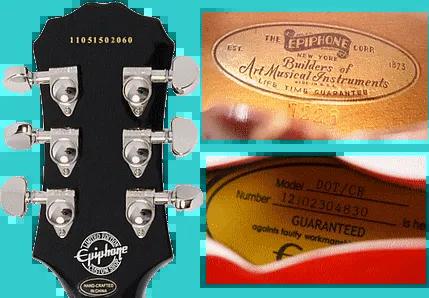
In my work as an engineer in lutherie, I’ve seen serial numbers serve as a bridge connecting players to the rich narratives of their instruments. What if the numbers on your guitar could tell you more than just when it was made? This question excites me every time I examine a new piece. For those of us who cherish these musical treasures, Epiphone serial numbers are more than just identifiers; they’re gateways to understanding an instrument’s unique heritage.
Each Epiphone serial number is like a code embedded with history. These numbers indicate when and where the guitar was crafted, often revealing details about the factory origin, year of production, and even the specific batch in which the guitar was created. It’s an incredible feeling to hold your guitar and imagine the journey it has been through.
Throughout my journey in lutherie, I’ve learned serial numbers are crucial in authenticating guitars and discerning their genuine value. This knowledge not only enhances the appreciation for these instruments but also equips owners with the tools to preserve and celebrate their histories. Thus, understanding these numbers is more than just a technical exercise; it’s an exploration of a guitar’s character and the artistry behind its creation.
Why Is Serial Number Important for Epiphone Guitars?
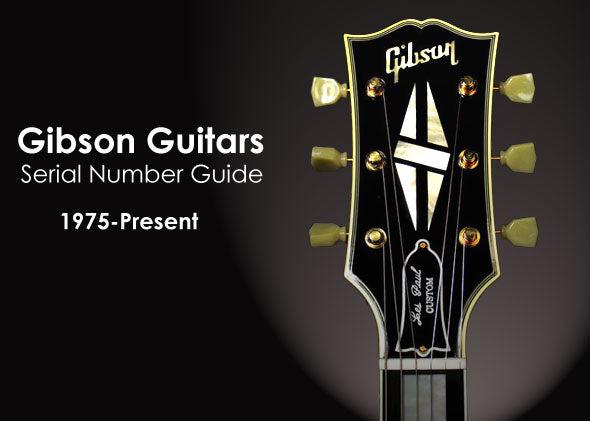
Is the value of your Epiphone guitar hidden within its serial number? Over my years in the field, I’ve discovered that a guitar’s story often extends far beyond its strings and wood. When it comes to Epiphone guitars, the importance of the serial number cannot be overstated. This seemingly random sequence of characters is a treasure trove of information.
Like a skilled detective, I’ve unraveled countless tales encoded within those digits. A serial number can reveal when and where your instrument was crafted, details that enhance its lineage and, potentially, increase its monetary and sentimental worth. As someone who appreciates the transformation of mere objects into cherished heirlooms, I find immense value in these details.
Understanding an Epiphone guitar’s serial number allows you to place your instrument within the broader narrative of music history. It can reveal if your guitar hails from a notable era or perhaps was part of a famous production run, functions that are crucial for collectors and enthusiasts alike. It’s this deeper connection to the past that makes owning a guitar more than just having a musical tool—it’s owning a piece of art, history, and craftsmanship.
By using the serial number as your guide, you unearth the stories embedded within the guitar’s fibers, transforming your connection with it into something truly extraordinary.
Who Can Use Epiphone Serial Numbers for Identification?
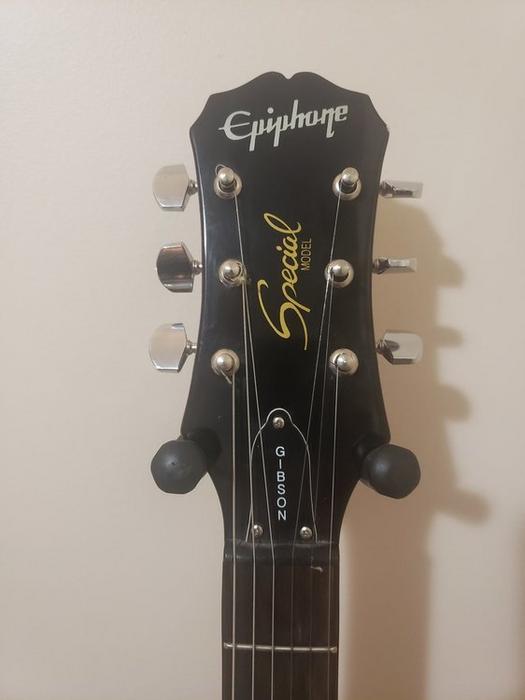
Are you a collector, musician, or enthusiast? Understanding your Epiphone’s serial number can mean different things to you. As an editor for the Savart Journal, I’ve learned that knowledge about serial numbers empowers all types of guitar aficionados, from musicians to collectors. In my experience, serial numbers serve as a bridge to the story of your instrument. For collectors, they are vital keys to verifying authenticity and tracing provenance. Musicians might find them useful for ensuring their instrument’s value aligns with its historical and manufacturing context, potentially impacting how they perform or record. Enthusiasts, meanwhile, can delve into the fascinating world of production details, uncovering the unique journey of each guitar. By unlocking the secrets encoded in these numbers, everyone, regardless of their connection to the instrument, gains a deeper appreciation and understanding of their Epiphone’s legacy and identity. Through this exploration, the joy of guitar ownership truly comes alive.
Where to Find the Serial Number on an Epiphone Guitar?
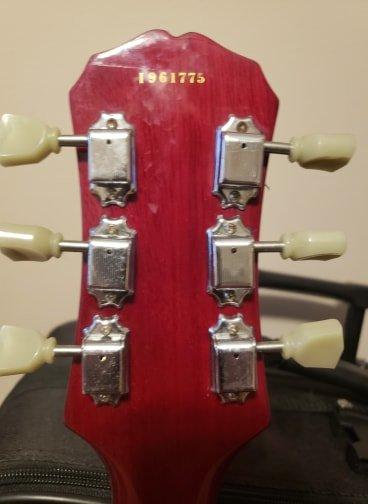
Have you ever struggled to locate a serial number on your beloved Epiphone? In my journey of instrument design, I’ve often encountered players who overlook these small details that can lead to amazing discoveries about their guitars.
Finding your Epiphone guitar’s serial number is akin to unearthing a key piece of its identity, a gateway to its history and origins. Often, players reach out to me, curious to uncover their guitar’s story but unsure where to start. I’ve been in those shoes myself, scouring every inch of my instruments to uncover these minute yet crucial identifiers.
Most often, you’ll find the serial number on the back of the headstock. This is true for the majority of Epiphone guitars, and it’s where my journey often begins when delving into a guitar’s past. Sometimes, however, it’s located inside the soundhole of the guitar. When it is acoustics we’re dealing with, this is your hunting ground. Simply tilt the guitar to catch a glimpse of what lies within—it’s akin to peering into a secret compartment holding untold stories. Understanding where to look not only assists in identification but also deepens the connection with your instrument’s rich legacy.
Remember, the guitar in your hands isn’t just a musical tool; it’s a storied artifact, eager to share its tales if you know where to look.
When Was Your Epiphone Guitar Made? Interpreting Serial Numbers
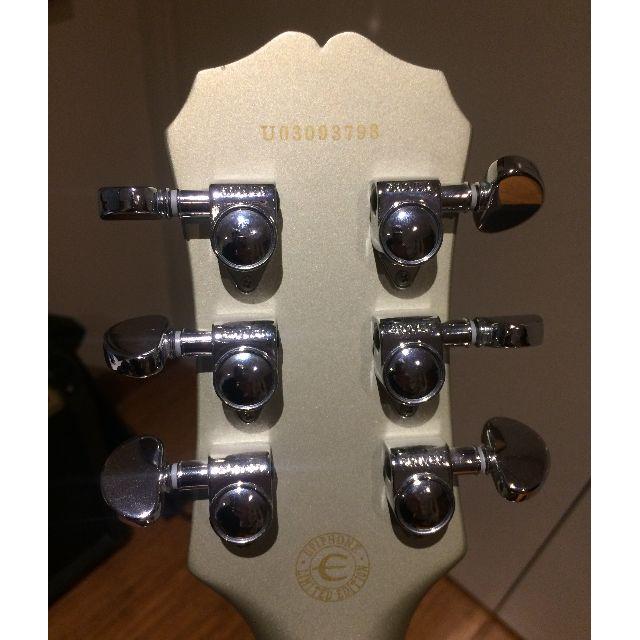
What if you could decode the exact year your Epiphone was born? From my work with luthiers, I’ve learned that a guitar’s manufacturing date can reveal not just its age, but also the era of music it was born into. This connection between a guitar’s serial number and its history is what truly captivates me. Understanding the time context of my Epiphones has enriched my appreciation for each instrument’s story.
Interpreting serial numbers is like unlocking a secret lineage unique to each guitar. With Epiphone, once you know how to read the numbers, you uncover not only the year of production but also the specific factory where it was crafted. This can tell you about the materials used, the specific techniques employed, and even the key characteristics of the model during that period. My own experience tells me that discovering these details can deepen your understanding of not just your guitar but the music it aims to produce.
Diving into these numbers can be an exhilarating journey for any guitar enthusiast. This sense of detective work results in a more profound, personal connection with your instrument, transforming a mere piece of wood and strings into an organic part of musical history.
How to Check Epiphone Serial Number for Model and Date
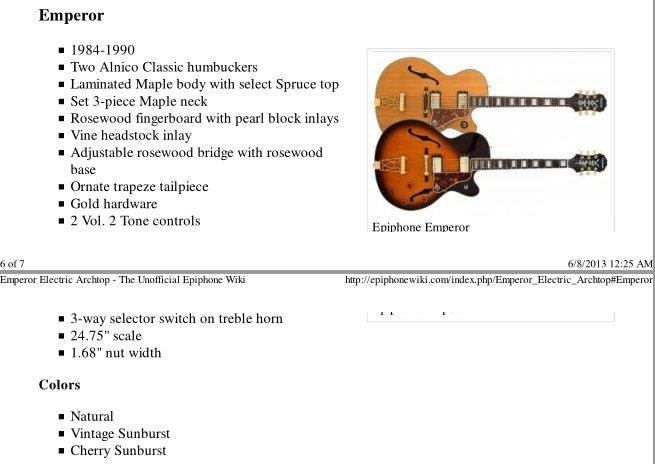
Understanding the essence of your guitar can truly transform your playing experience, as I’ve discovered during my own journey delving into the acoustics and ergonomics that define our musical tools. Ready to uncover the secrets locked in your guitar’s serial number? This little code is your key to unlocking a wealth of information about your Epiphone guitar, including its model and manufacture date. Knowing these specifics is more than just academic; it can profoundly enhance the connection between you and your instrument.
Start by locating the serial number, usually found on the back of the headstock or within the soundhole of your Epiphone. Once you’ve found it, you’ll need to decode it. Various formats have been used over the years, so your challenge lies in identifying the correct pattern. For instance, many serial numbers begin with a letter indicating the factory where the guitar was made, followed by digits that often signify the year and month of production. By tracing these details, you not only find out when and where your guitar was crafted but also its precise model—information that can be crucial for repairs, insurance, or simply satisfying your curiosity.
In my experience, armed with this knowledge, you can appreciate the craftsmanship and history behind your guitar, turning a simple serial number into a story waiting to be told. Let’s explore this path to deepen our relationship with our cherished instruments.
FAQs
What is an Epiphone Serial Number?
Where can I find the serial number on my Epiphone guitar?
How do I use an Epiphone serial number lookup tool?
Why is it important to identify my Epiphone guitar using the serial number?
Conclusion
Reflecting on my journey, it’s clear that each serial number holds a story worth exploring, connecting musicians with the legacy of their instruments. What have we discovered about the power of an Epiphone serial number? It’s an incredible tool that illuminates the rich tapestry of Epiphone history, offering insights into the authenticity, origin, and dating of these beloved guitars. Navigating this landscape has shown me how crucial serial numbers are for understanding where and when our Epiphone guitars were crafted. By demystifying these numbers, we’ve unlocked a way to preserve the historical and sentimental value of each instrument. Whether you’re a seasoned guitarist or a curious enthusiast, grasping the significance of this identifier enhances not only your knowledge but also your appreciation of the music-making journey. With these insights, we can connect more deeply with the past, present, and future of our cherished Epiphone guitars.

R.M. Mottola, an engineer-turned-luthier, revolutionizes stringed instrument design with his deep focus on acoustics and ergonomics since 1994. As editor of the Savart Journal and a key contributor to American Lutherie, Mottola merges science with artistry in lutherie. He enriches the field with his extensive knowledge, shared through his Liutaio Mottola website, making him a beacon in the world of modern instrument craftsmanship.

Conclusion: The only info you get from your serial number is when and where it was made. NOT THE MODEL. Which is why I read your essay. And not a link to any decoder ? Wow……..